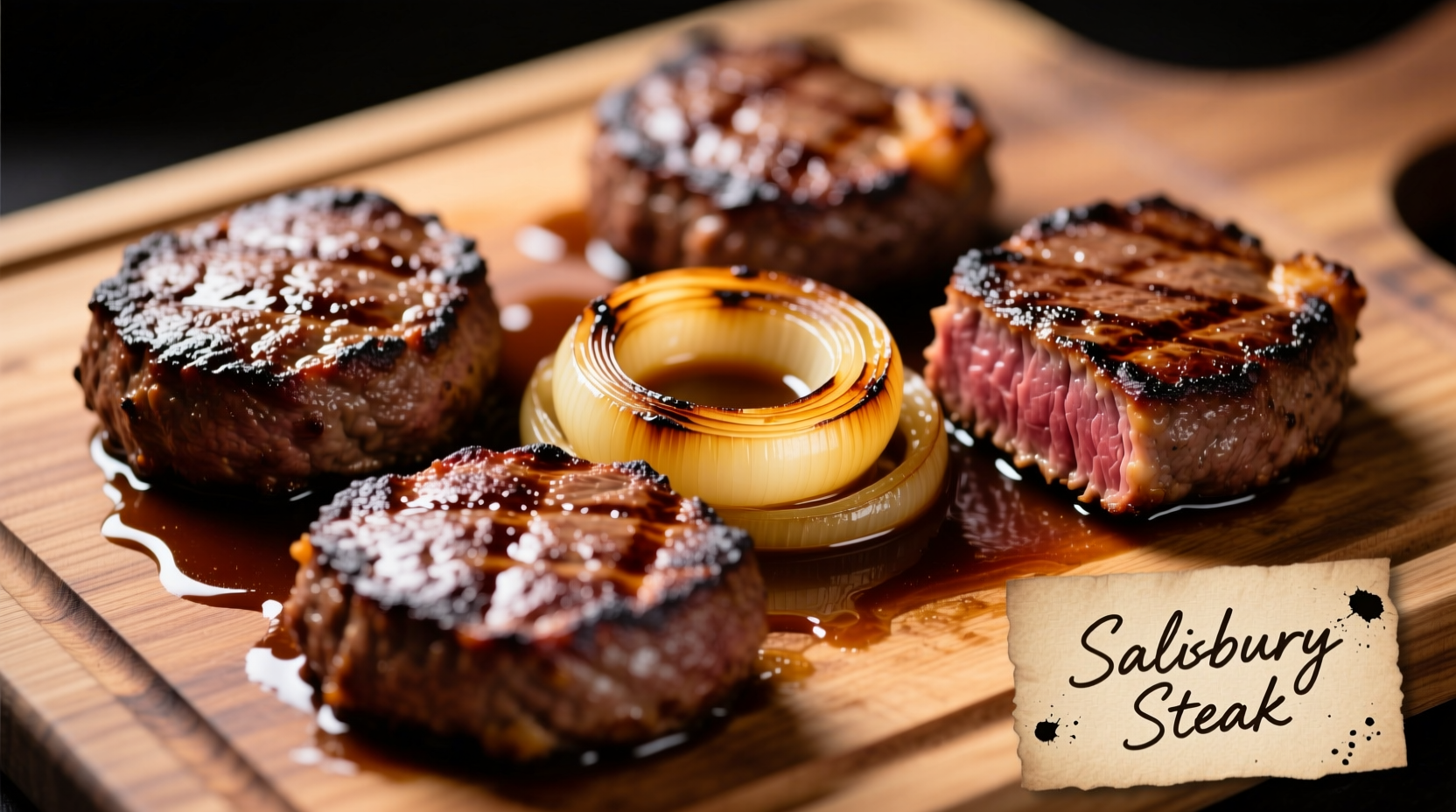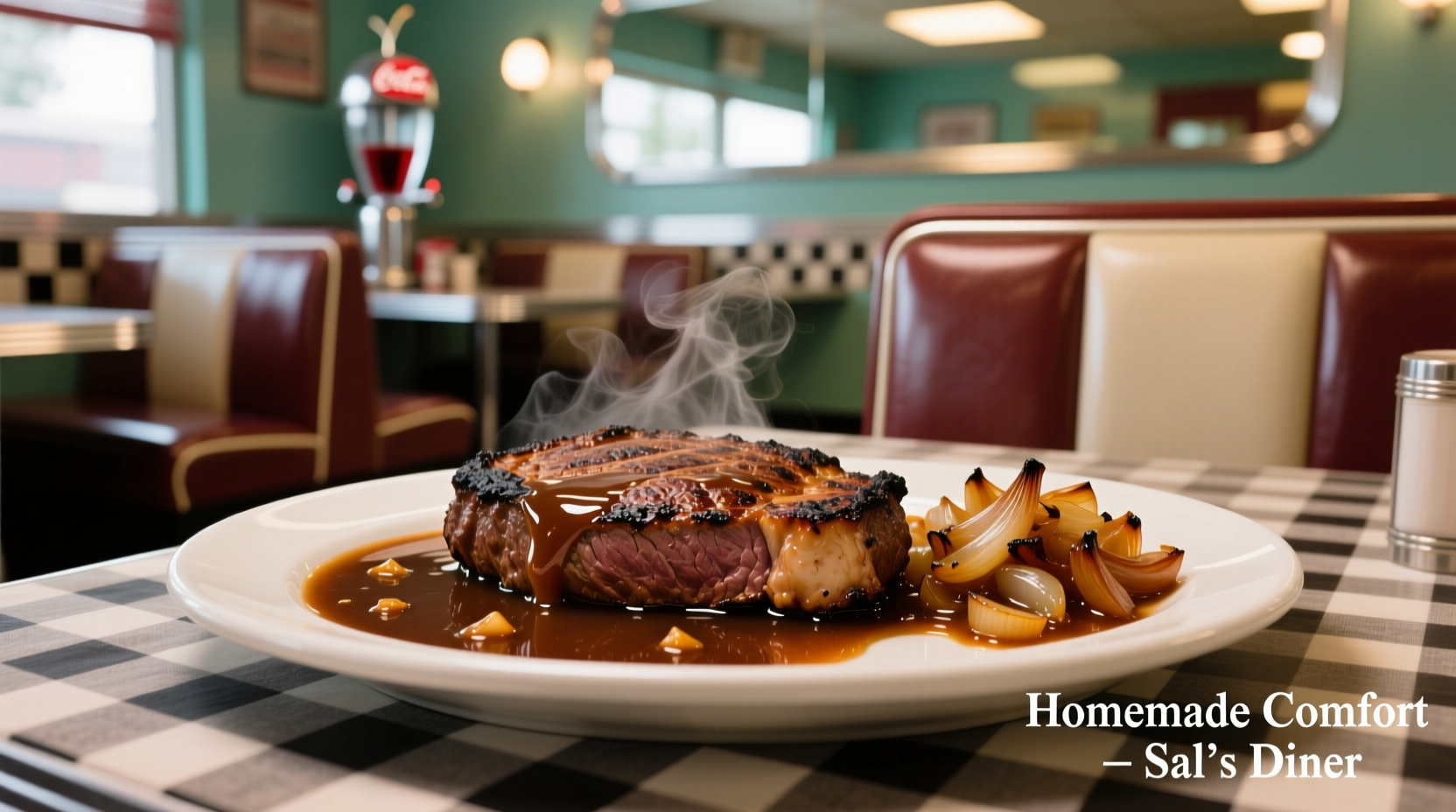If you've ever wondered why your Salisbury steak falls apart or lacks that restaurant-quality flavor, you're not alone. This guide reveals the exact techniques professional chefs use to create perfectly textured patties with deeply flavorful onion gravy that elevates this classic American dish from cafeteria food to dinner-worthy comfort meal. You'll learn the meat blend ratio that prevents crumbling, the onion caramelization secret that builds complex gravy flavor, and the timing that ensures juicy results every time.
The Evolution of an American Classic
Salisbury steak has a surprisingly rich history that explains its enduring popularity. Originally developed in the late 19th century by Dr. James Salisbury as part of a high-protein diet regimen, this ground beef preparation gained widespread recognition during World War II when meat shortages made it a practical alternative to traditional steak cuts. By the 1950s, it had become a staple in American diners and home kitchens alike, often served with mashed potatoes and green beans.
Salisbury Steak Historical Timeline
- 1888 - Dr. James Salisbury publishes "The Relation of Food to Disease," recommending ground beef patties for digestive health
- 1920s - Recipe appears in mainstream cookbooks with added fillers like breadcrumbs and onions
- 1940s - Gains popularity during WWII meat rationing as economical protein option
- 1950s - Becomes diner staple, often served with mushroom or onion gravy
- 1980s - Appears in frozen dinner sections of grocery stores
- Present - Experiencing a revival as chefs reinterpret this classic comfort food
What Makes Authentic Salisbury Steak Different
Many home cooks confuse Salisbury steak with hamburger steak or meatloaf, but key distinctions exist. Unlike hamburger steak (which is simply a seasoned ground beef patty), Salisbury steak contains specific binders and seasonings that create its distinctive texture and flavor profile. It's also typically served with gravy rather than condiments.
| Dish | Meat Composition | Binders | Serving Style |
|---|---|---|---|
| Salisbury Steak | 80% lean beef with Worcestershire sauce | Breadcrumbs, egg, mustard | Smothered in onion gravy |
| Hamburger Steak | Pure ground beef, minimal seasoning | Rarely contains binders | With condiments or plain |
| Meatloaf | Various meats, often mixed | Multiple binders, vegetables | Sliced, often with ketchup glaze |
Essential Ingredients for Perfect Results
The magic of Salisbury steak happens in the details of your ingredient selection. For the patties, use 80% lean ground beef - the fat content is crucial for flavor and moisture. Avoid leaner blends that produce dry results. The ideal binder ratio combines equal parts breadcrumbs and milk (what chefs call a "panade") which creates a tender texture without making patties fall apart.
For the onion gravy, yellow onions provide the best balance of sweetness and sharpness. Never substitute with sweet onions like Vidalias, which lack the necessary complexity for proper caramelization. Use homemade beef stock if possible, or choose low-sodium store-bought varieties you can enhance with additional flavorings.
Step-by-Step Preparation Guide
Creating the Perfect Patty Mixture
- Combine 1 cup breadcrumbs with ½ cup milk and let sit for 5 minutes to form panade
- In large bowl, mix 2 lbs ground beef with panade, 1 egg, 2 tbsp Worcestershire sauce, 1 tbsp Dijon mustard, 1 tsp garlic powder, and ½ tsp black pepper
- Gently fold ingredients together - never overmix as this creates tough patties
- Chill mixture for 30 minutes before shaping to improve texture and prevent crumbling
Shaping and Cooking Techniques
Forming the patties correctly makes all the difference. Create oval shapes approximately 4 inches long and 1 inch thick. Press your thumb gently into the center of each patty to create a slight indentation - this prevents bulging during cooking. For best results, cook in a cast-iron skillet over medium-high heat for 4-5 minutes per side until deeply browned.

Mastering the Onion Gravy
The gravy transforms Salisbury steak from ordinary to extraordinary. After removing cooked patties, use the same skillet to build flavor layers:
- Add 2 thinly sliced yellow onions to the drippings and cook over medium-low heat for 20-25 minutes until deeply caramelized
- Stir in 2 tbsp all-purpose flour and cook for 1 minute to eliminate raw flour taste
- Gradually whisk in 2 cups beef broth, scraping up all browned bits from the pan
- Add 1 tbsp soy sauce and 1 tsp thyme for depth of flavor
- Return patties to the skillet, cover, and simmer for 10-15 minutes until heated through
Avoiding Common Pitfalls
Even experienced cooks make these critical mistakes that compromise results:
- Overmixing the meat - Creates dense, tough patties instead of tender texture
- Rushing onion caramelization - Properly caramelized onions take 20+ minutes; shortcuts produce bitter gravy
- Using cold ingredients - Chilled meat mixture helps maintain structure during cooking
- Skipping the resting step - Let patties rest 5 minutes after cooking for juicier results
Serving Suggestions and Variations
Traditional pairings include mashed potatoes and steamed green beans, but modern interpretations work well too. For a contemporary twist, serve over creamy polenta or cauliflower mash for lower-carb options. Add mushrooms during the gravy preparation for a mushroom-onion gravy variation that adds earthy complexity.
Leftovers store well in the refrigerator for 3-4 days. When reheating, place patties and gravy in a covered dish with a splash of broth to maintain moisture. Freezing works well for up to 3 months - thaw overnight in the refrigerator before reheating.











 浙公网安备
33010002000092号
浙公网安备
33010002000092号 浙B2-20120091-4
浙B2-20120091-4